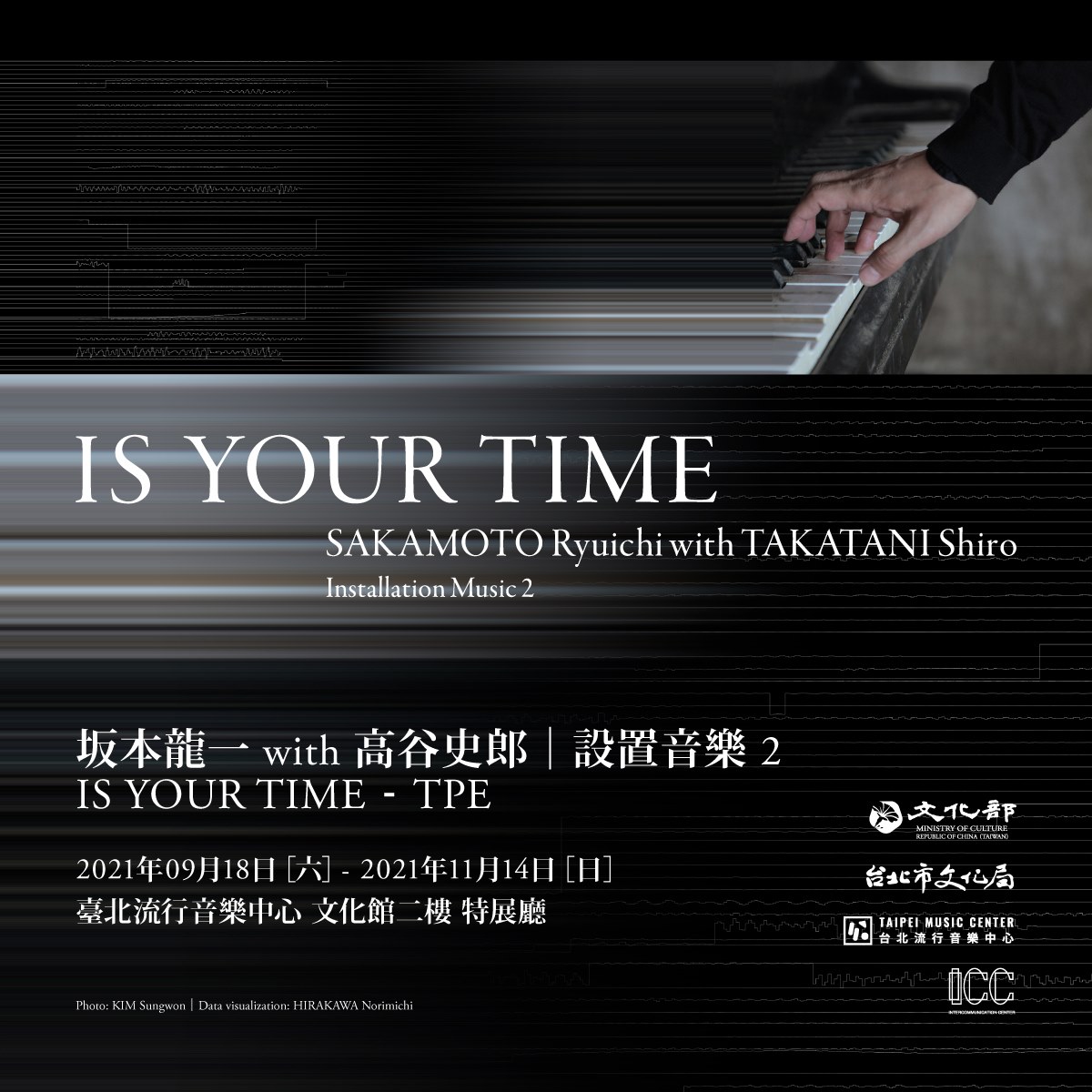by Brian Hioe
語言:
English
Photo Credit: Taipei Music Center
The following article originally appeared on Electric Soul, a Hong Kong-based electronic music magazine and ticketing platform, on October 8th. More collaborations between No Man is an Island/New Bloom and Electric Soul will be coming up!
RYUICHI SAKAMOTO and Shiro Takatani’s art installation, “Is Your Time,” proves a powerful meditation on the 2011 Tohoku earthquake and tsunami. This is presented through the piano at the centerpiece of the installation, which was discovered by Sakamoto in the ruins of a building in the affected Fukushima prefecture, left behind by its owners—wherever they might be now. The art installation is currently showing in the Taipei Music Center until November 14th, after having already been shown in Tokyo and Beijing.
The piano stands in the center of a dark room when viewers enter the installation. The installation, then, animates the piano. Machinery installed around the piano allows it to play notes without a player, which is paired with ambient noise from an array of speakers set up around the room that the piano is placed in the center of. Ten monitors set up around the room display visualizations drawn from seismic data.
Sometimes, the piano seems to play haunting, ghostly notes from its original owners, who could very well be dead in the wake of the typhoon and who are, in any case, lost to time. Other times, the notes hit broken strings, showing how the piano can itself be seen as something of a victim of the Tohoku earthquake and tsunami—damage from flooding is still visible around the piano. The arrangement of the machinery around the piano maintains the original structure of the piano, but seems to give it voice.
As the viewer’s eyes adjust to the light, the visualizations on the monitors become more prominent. Sometimes the visualization evokes the flood itself, or the sense of being cast adrift. At other points, the visualization suggests something like transcendence. Most surprising of all may be when the room comes to life, speaking with numerous voices including perhaps that of the piano itself, as viewers tend to drift around the room, moving around the piano, so as to hear the different sounds that can only be heard in certain locations. It is particularly striking when the light casts the other viewers of the installation in an uncanny light, which may be a deliberate effect. The ambient noise from the installation is primarily drawn from Sakamoto’s album, async, but manages to add a physical presence to the album through the use of the piano.
The ultimate effect of the installation is subtle, gradually working its effect on viewers across half an hour. Extended viewing is necessary for the installation to be felt in its full force. Not only does the exhibition tell a powerfully felt story, but it does so in terms of visceral auditory experience—never overwhelming, but working subtly with memory, haunting, and presence.



